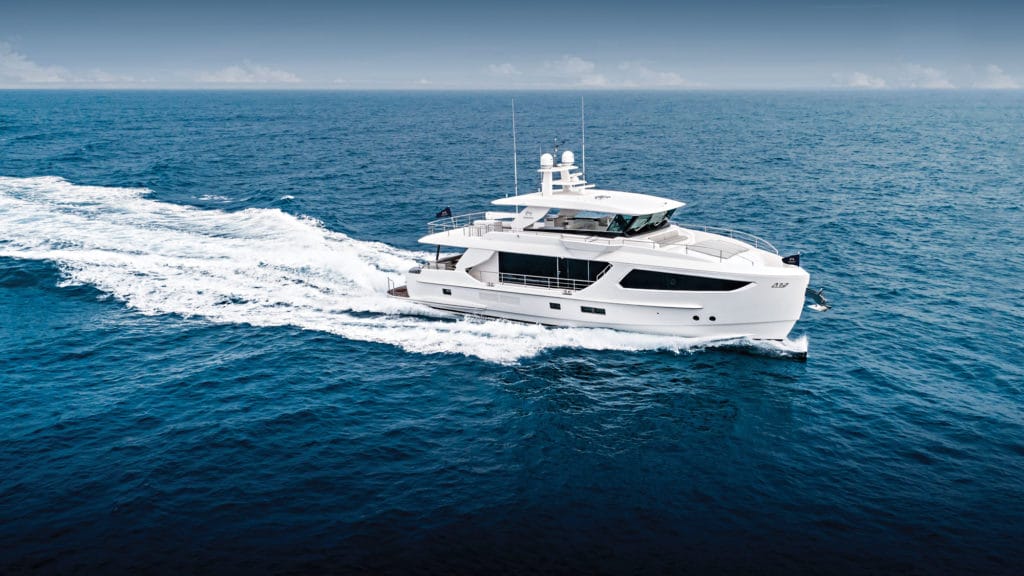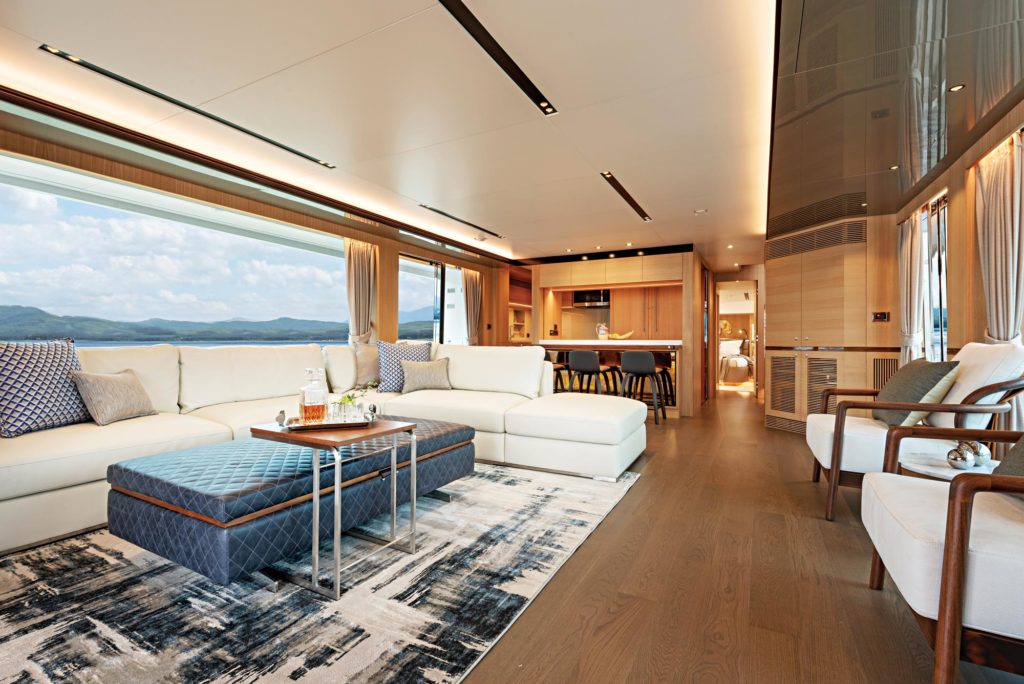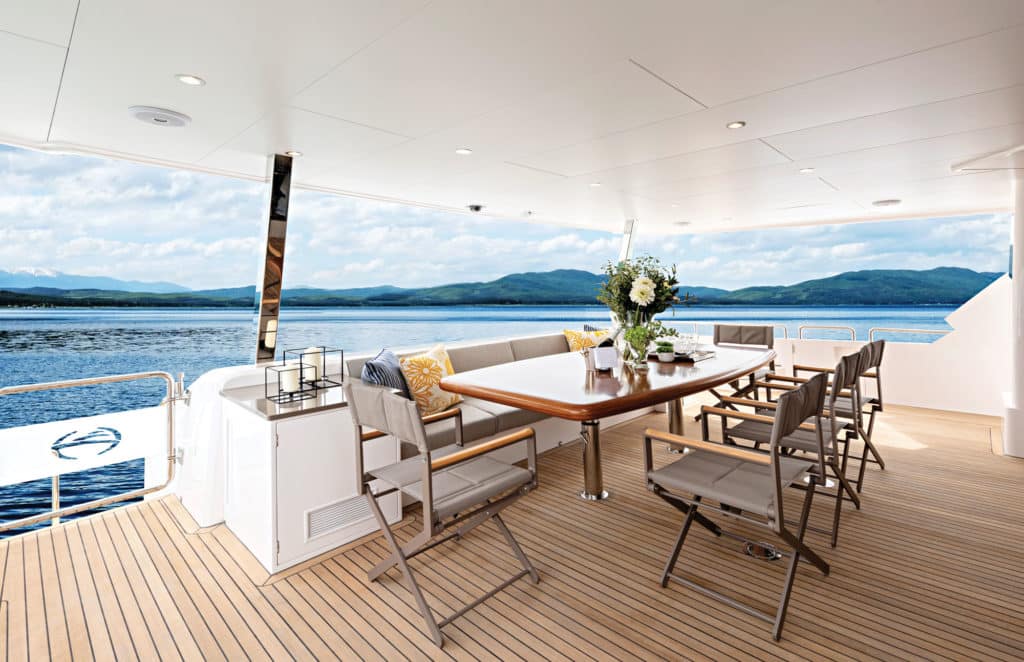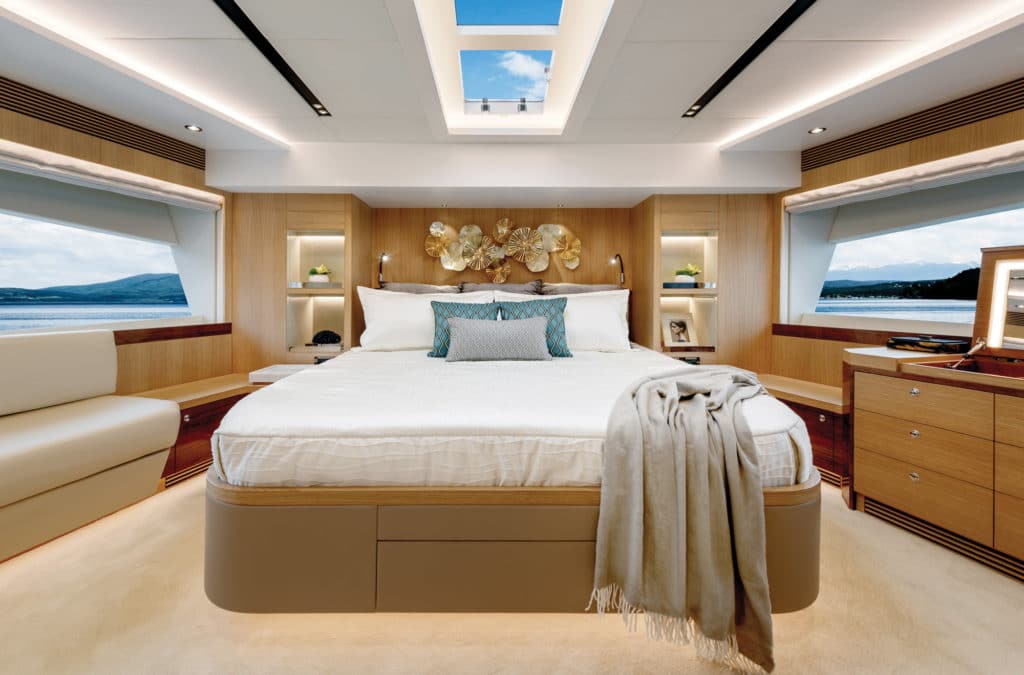
Taiwan-based Horizon Yachts has long been known for building sturdy, seaworthy vessels with an unmistakable panache for creature comforts. The builder’s latest model in its Fast Displacement series, the FD80, is directly in line with the brand’s pedigree.
The 80-foot, 7-inch FD80 is the sistership to Horizon’s FD85, designed by Dutch yacht designer Cor D. Rover. The FD in FD80 stands for fast-displacement hull, and the boat has Horizon’s high-performance piercing bow. The hull has a soft chine at amidships that Horizon says makes it slicker in the water and a hard chine forward that increases lift. The bow design is meant to cut cleanly through the water while stretching out the yacht’s underwater length, thereby improving the vessel’s hydrodynamic efficiency.

The result is a yacht that can cruise at displacement and planing speeds. The FD80 is happy to poke along at 8.5 knots for extended voyages, where she burns 6.9 gallons per hour for a projected range of 3,248 nautical miles—enough to get from Maine to England without refueling. She can also gallop at 20 knots. She cruises most comfortably at about 13 knots, which is where I had her in the Atlantic Ocean off Florida’s southeast coast. At that speed, she burns 57 gallons per hour for a projected range of 630 nautical miles.
Confused 4-foot swells crisscrossed the ocean’s surface—a desirable field to see if the FD80 could play ball. It turns out, she can. At that 13-knot cruise speed, she ran quietly and her hull provided soft landings in even the deepest troughs. She was also nimble for a beamy boat that displaces 174,160 pounds. At her fast cruise speed, I turned her hard over to port and starboard in less than a single boat length. That kind of handling is something you’re more likely to see from a 35-foot RIB than from an 80-foot motoryacht.

The FD80 I was aboard had optional twin 1,200 hp MAN V-8s (twin 1,130 hp Caterpillar C13s are standard). The powerplants were housed in a gleaming engine room with a white gelcoat sole that made it easier to spot spills. Headroom measured 7 feet, 6 inches, and handholds nearly everywhere should be easy to grab in a seaway. Twin 29-kW Cummins Onan generators supplied redundancy, and access to them and all sides of the engines should make regular maintenance tasks easier.
Inside, the master stateroom is on the main deck. Rectangular windows on either side pair with a skylight that runs nearly the full length of the stateroom for natural light. The FD80 carries her 22-foot, 6-inch beam almost completely forward, and that allows the master more space than what usually might be found on a vessel this length. (A forward VIP stateroom belowdecks also benefits from carrying the beam forward.)

Up above, the FD80’s bridge is pre-plumbed for a hot tub, though there wasn’t one on this particular FD80. A Steelhead ES Series 1500 davit can hoist a 16-foot tender. A high-low barbecue can stow away, and there’s a bar for three to port that is an optimal choice for a sundowner or two. The partially enclosed helm has two Stidd chairs, four Garmin screens and excellent sightlines.
The FD80 that I got aboard was Hull No. 1, and she already felt dialed in, including the fit and finish on the matte and high-gloss woods in the interior. This is a yacht that combines onboard appeal with serious seafaring capabilities.
Take the next step: horizonyachtusa.com








